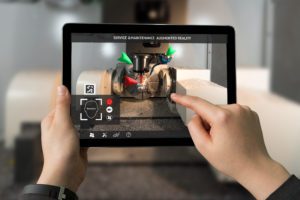As Tropical Storm Arthur churns off the coast of Florida and threatens to become a hurricane by the time it reaches the Outer Banks of North Carolina, it is a good time to take a look at your Disaster Recovery Plan. Fortunately, with today’s forecasting technologies, we can predict some natural disasters days in advance allowing time to prepare for long-term power outages or worse.
Data and computer systems are the heart of every business and even a brief interruption in access to your servers, network, and applications can be costly to your business. It’s a good practice for all companies, no matter how small, to have a disaster recovery plan so all data can be preserved. In some industries, the government mandates a comprehensive disaster recovery plan to ensure the continuity of critical business and industry in our country.
For very small companies, your disaster recovery plan may be as simple as a tape back-up sent off-site, or back-up drives, or even utilizing some of the more common cloud back-up services. The data back-up is important, but that’s not the whole picture. You need to access your data, which means you need to maintain your network connection. Be sure to connect your modems and routers to your UPS so you have some time to react to a power failure without interrupting critical processes or losing data. APC Smart-UPS online are great for this application. Remember to test the batteries periodically and replace them with the appropriate RBC cartridge every 3-4 years.
Larger organizations frequently maintain off-site disaster recovery data centers that closely mirror their primary data center. Others have moved their disaster recovery site to the cloud or use a combination of both. For today’s busy data center manager, the primary risk with off-site or cloud-based DR is the “set it and forget it” mentality that can ensue. It’s difficult to give remote locations and cloud based servers the same attention as your primary data center, but their function is just as critical – if not more so.
Be sure that your DR site is connected to your StruxureWare appliance and that you have the Data Center Expert enterprise Management Pack you can monitor the security and environmental conditions of the DR site and manage the remote equipment as closely as the DCIP that is in your data center down the hall. Maintain a factory service plan for your remote equipment and be sure to keep up with battery replacements when they are due.
Have you lost touch with the status of your DR equipment? Now is the time to schedule a Data Center Assessment Service and have a factory-authorized Field Service Engineer inventory and audit your DR site and make recommendations for preventive maintenance and/or repairs.
Tropical Storm Arthur represents an early start to the 2014 Hurricane Season and while we never know how many hurricanes will make landfall in the US, the threat of severe weather always exists – and not just on the East Coast. DR sites are an industry best practice for recovery from all types of disasters be they naturally occurring – hurricanes, tornadoes, floods, earthquakes, or man-made – fire, terrorism, or just plain human error.
Take some time this week to review your company’s disaster recovery plan and contact your Schneider Electric representative to assist with any assessment services, battery or equipment replacements, or monitoring and management with NetBotz and StruxureWare.

